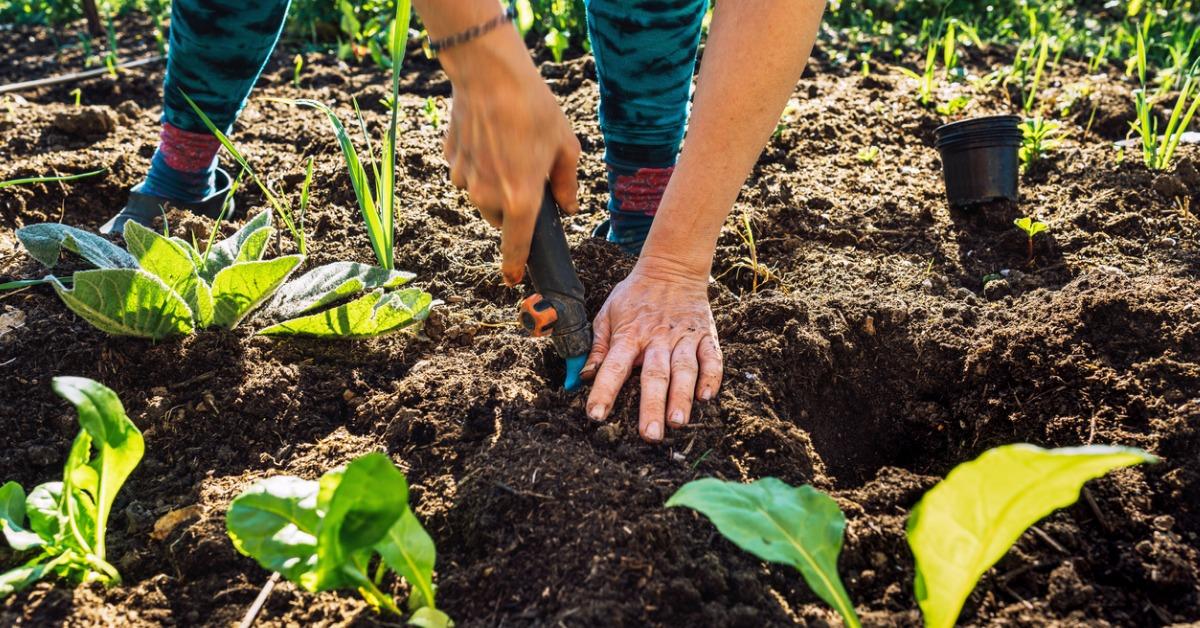Gardening Tips for Beginners: Unlocking the Potential of Your Green Thumb
Wiki Article
From Beginner to Green Thumb: a Novice's Trip Into the Globe of Horticulture
From Novice to Environment-friendly Thumb: a Beginner's Trip Into the World of Horticulture provides a comprehensive guide for individuals looking to cultivate their own garden. gardening for beginners. From comprehending the essentials of plant selection and dirt prep work to fixing typical gardening concerns, this book furnishes visitors with the knowledge and abilities needed to transform their outdoor areas into prospering gardens.Recognizing the Essentials
The first step in becoming an effective garden enthusiast is to understand the fundamental principles and strategies that develop the structure of gardening. Comprehending the essentials is necessary for any individual that wants to expand and support plants successfully. Among the fundamental principles of gardening is to provide plants with the best expanding conditions. This includes thinking about variables such as sunshine, soil high quality, water requirements, and temperature level preferences. Different plants have differing requirements, and it is vital to research and comprehend these requirements before choosing and growing them in your yard.
Additionally, recognizing bug and illness management is crucial for maintaining a healthy and balanced garden. Identifying typical garden parasites and conditions, as well as discovering organic and chemical control approaches, can aid avoid and deal with concerns that may occur.
Selecting the Right Plants
To ensure an effective horticulture journey, amateur garden enthusiasts must very carefully pick plants that straighten with their garden's particular growing problems. Picking the right plants is important as it figures out the total wellness and performance of the yard. Each plant has its very own collection of needs, consisting of sunlight, dirt kind, moisture degrees, and temperature level. By comprehending these demands and choosing plants as necessary, gardeners can create the optimal growing environment for their plants.Among the initial aspects to take into consideration when choosing plants is the quantity of sunlight readily available in the yard. Some plants grow completely sun, while others like partial or even full shade. Analyzing the quantity of sunlight gotten in various areas of the garden will certainly help identify which plants will certainly grow in each location.
Soil type is an additional crucial factor to consider. Different plants have various dirt preferences, varying from well-draining sandy dirt to moisture-retaining clay soil. Performing a dirt examination can provide beneficial details concerning the pH level and nutrient content of the dirt, aiding gardeners select plants that will certainly grow in their garden's specific dirt problems.
Additionally, water demands play a substantial duty in plant option. Some plants are drought-tolerant and need minimal watering, while others prosper in wet environments. When selecting plants., taking into consideration the availability of water and the ability to offer appropriate watering is important.
Last but not least, the neighborhood environment and temperature level fluctuations should be taken into account. Some plants are much more cold-hardy and can stand up to frost and freezing temperature levels, while others are much more matched to cozy and exotic climates. Understanding the climate and picking plants as necessary will guarantee their survival and success in the yard.
Preparing the Soil
Appropriate dirt prep work is necessary for newbie gardeners to develop a abundant and nutrient-rich foundation for their plants. Before growing, it is critical to evaluate the soil's structure, nutrient, and drainage content to guarantee optimal expanding conditions. One of the very first steps in dirt preparation is eliminating any weeds or particles from the planting area. This aids stop competition for nutrients and lowers the threat of bugs and diseases. When cleared, the dirt ought to be loosened to improve its framework and enable far better root growth. This can be done by tilling or excavating the soil, separating any type of compacted areas.It is additionally vital to examine the dirt's pH level to establish its level of acidity or alkalinity. Most plants favor a slightly acidic pH in between 6.0 and 7.0. If the dirt is also acidic or alkaline, modifications such as lime or sulfur additional hints can be added to adjust the pH appropriately.
Adding organic matter, such as compost or well-rotted manure, is one more essential step in dirt prep work. Organic matter improves dirt framework, improves drain, and offers necessary nutrients for plant development. It also serves as a sponge, assisting the soil retain wetness during completely dry durations.

Nurturing and Maintaining Your Garden
After preparing the dirt, amateur gardeners can begin nurturing and preserving their yard to make certain healthy and balanced plant development and a plentiful harvest. Supporting a yard entails numerous key jobs, including watering, fertilizing, and shielding plants from diseases and insects.Watering is crucial for plant survival, and it is crucial to offer sufficient wetness without overwatering. Amateur garden enthusiasts must discover regarding the sprinkling demands of their certain plants and readjust accordingly. It is recommended to water plants in the morning to allow enough time for the vegetation to completely dry prior to nightfall, decreasing the risk of diseases.
Fertilizing is an additional essential aspect of yard maintenance. Novice garden enthusiasts need to research the details dietary needs of their plants and select proper plant foods. Organic choices, such as garden compost or manure, can be valuable for overall plant health and dirt fertility.
Securing plants from pests and diseases is a constant initiative. Regular monitoring, early detection, and timely activity are essential to stop considerable damage. Newbie gardeners need to familiarize themselves with usual pests and diseases in their area and find out regarding organic or chemical control techniques.
In enhancement to these tasks, normal weeding, pruning, and mulching needs to not be neglected. Weeds complete with plants for resources, so removing them regularly is essential. Trimming helps shape plants and urges healthier growth, while mulching preserves moisture, subdues weeds, and regulates soil temperature level.
Troubleshooting Common Horticulture Issues
Garden enthusiasts might run into different common gardening issues that require troubleshooting to maintain the wellness and vigor of their plants. Pests like slugs, aphids, and snails can create chaos on plants, creating damages to fallen leaves, stems, and flowers.An additional concern that garden enthusiasts usually encounter is nutrient shortage. Plants call for a balanced supply of nutrients to thrive, and deficiencies can lead to stunted growth, yellowing fallen leaves, and poor fruit advancement. Carrying out a soil examination can assist identify which nutrients are lacking and permit gardeners to amend the soil accordingly with organic find more plant foods or garden compost.
In addition, improper watering practices can additionally trigger issues in the garden. Overwatering can cause root rot and fungal conditions, while underwatering can trigger wilting and nutrition inequalities. Locating the ideal balance is essential, and garden enthusiasts should check soil dampness levels and adjust sprinkling schedules as necessary.
Lastly, climate and weather can position obstacles to gardeners. Severe temperatures, frost, solid winds, and heavy rainfall can damage plants. Safety steps such as making use of frost covers, windbreaks, and giving color can help alleviate these issues.
Final Thought
To conclude, this short article has actually given a comprehensive review of the trip from being a beginner to becoming an environment-friendly thumb in the world of gardening. By comprehending the fundamentals, picking the right plants, preparing the soil, and nurturing and keeping the garden, novices can get rid of typical horticulture issues and successfully grow their own rich and vivid yards. With commitment and technique, anyone can establish the skills and understanding essential to become a skilled garden enthusiast.Different plants have varying requirements, and it is critical to research study and recognize these requirements before selecting and growing them in your yard.
By comprehending these demands and selecting plants as necessary, gardeners can create the optimal expanding atmosphere for their plants. gardening sites tips for beginners.
Various plants have various soil choices, varying from well-draining sandy dirt to moisture-retaining clay soil. Carrying out a soil test can provide useful details about the pH degree and nutrient material of the dirt, helping garden enthusiasts select plants that will flourish in their garden's details soil conditions.
By recognizing the basics, choosing the right plants, preparing the dirt, and nurturing and maintaining the yard, novices can get rid of usual horticulture problems and successfully cultivate their very own lush and vibrant yards.
Report this wiki page